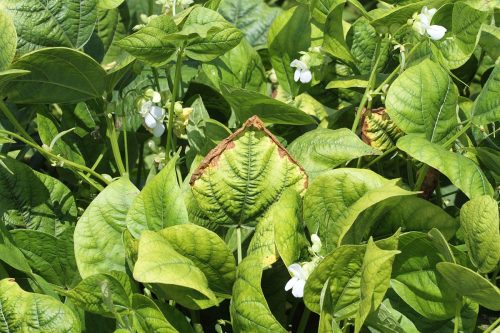Potassium deficiency is not a disease or fungus but a deficiency of potassium.
Also known as:
Potash deficiency
K-deficiency
Do not confuse with:
Calcium deficiency
Potassium deficiency is not a disease or fungus but a deficiency of potassium. Potassium is important for the transport of nutrients in the plant. Potassium is part of the cell fluid and plays an important role in the water absorption of the plant and the prevention of excessive evaporation.
Potassium deficiency manifests itself in crops in several ways: in potatoes, the leaves become shiny dark green, discolored to bronze and die prematurely.
In tomatoes, the leaves turn from dark green to reddish brown and yellowing of the leaf edges occurs. Due to potassium deficiency, tomatoes no longer turn red: some areas around the peduncle remain green or yellow.
The leaves of beans also develop brown edges when they are deficient in potassium.
Root vegetables (beet, parsnips, chicory, onion, carrot) need a lot of potassium. With potassium deficiency, roots and tubers become soft and roots remain pale. The leaves of grapes turn blue-black.
Potatoes are large consumers of potassium; with a deficiency the leaves become glossy green and with a major deficiency of potassium the leaves turn bronze and then die prematurely. Potatoes also become more susceptible to Potato bruising.
A potassium deficiency occurs on lighter soils. On sandy soils, potassium washes out easily in winter; clay soils retain potassium better. On sandy soils, fertilizing with potash is necessary.
Control
Fertilize with a potash fertilizers.
Prevention
Water regularly, provide adequate fertilization, and during the growing season in areas with light soils, give an additional fertilization with potassium.

